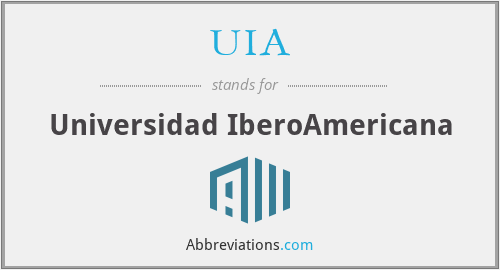5 Tips to Speed Up UIA Online Paperwork Processing

The era of digitalization has brought numerous benefits for administrative tasks, particularly in educational institutions. However, even the most streamlined systems can sometimes feel sluggish, especially when it comes to processing paperwork through platforms like UIA Online. Here are five practical tips to help you expedite the processing of your paperwork:
Tip 1: Prepare and Organize Your Documents

Preparation is key to speeding up any process. Before you even log in to UIA Online, make sure:
- Check for Completeness: Ensure all required documents are gathered, completed, and ready for upload. Incomplete submissions lead to delays.
- Name Files Appropriately: Use clear, descriptive names for your documents. This makes it easier for staff to review your files quickly.
- Organize Documents: Create a folder structure or label your files in a manner that reflects the submission process, e.g., ‘Proof of Address’, ‘Transcripts’, etc.
Tip 2: Log in Early and Be Persistent

Timing can be crucial when dealing with online systems:
- Log in During Non-Peak Hours: Early mornings, late evenings, or less busy times of the day might offer a smoother experience.
- Check for Maintenance Schedules: Avoid submitting during announced system maintenance or peak times.
- Be Persistent: If you encounter technical issues, keep trying to submit. Sometimes it’s just a matter of finding the right moment.
Tip 3: Leverage Digital Signatures and Electronic Submission

Traditional signatures and physical mail can significantly slow down the process:
- Use Digital Signatures: Where accepted, digital signatures are quicker than physical ones, reducing wait times.
- Submit Electronically: Email or online submission systems are faster than mailing documents, which can take days or even weeks to reach their destination.
🔔 Note: Always verify if digital signatures are acceptable for the documents you are submitting.
Tip 4: Use the Correct Channels and Follow Up

Knowing how and where to submit your documents can save you a lot of time:
- Correct Channels: Ensure you are using the correct submission channels for your paperwork. Some documents may need to be submitted via specific portals.
- Follow Up: After submission, keep track of your application status. Gentle reminders or follow-ups can sometimes speed up the review process.
- Be Courteous: Polite inquiries are more likely to elicit a positive response than aggressive ones.
Tip 5: Automate and Optimize

Technology offers tools to make your life easier:
- Automate: Use tools like email alerts to keep you informed of system status or changes in processing.
- Optimize: Fill out online forms correctly the first time to avoid multiple submissions or requests for clarification.
Remember, while these tips can significantly reduce processing time, they are not guarantees for instant processing. System capacities and staffing issues can still impact turnaround times. However, by implementing these strategies, you can streamline your efforts and reduce potential delays.
To wrap up, enhancing the speed at which UIA Online processes your paperwork involves a blend of preparation, timing, technological optimization, and persistence. Being organized, knowing the system, and utilizing available digital tools can make a significant difference in the efficiency of the process. Now you're equipped with the knowledge to navigate UIA Online more effectively!
What if my documents are rejected for incompleteness?

+
If your documents are rejected due to incompleteness, review the rejection notification for specific details. Then, promptly gather the missing information or documents and resubmit your application.
Can I use these tips for other online educational platforms?

+
Yes, while tailored for UIA Online, these tips are generally applicable to other educational platforms. Adapt them to fit the specific requirements and interface of the platform you’re using.
How can I know if digital signatures are acceptable?

+
Check the guidelines or FAQ sections of the platform you’re using or contact the institution’s support to confirm if digital signatures are acceptable for your particular case.